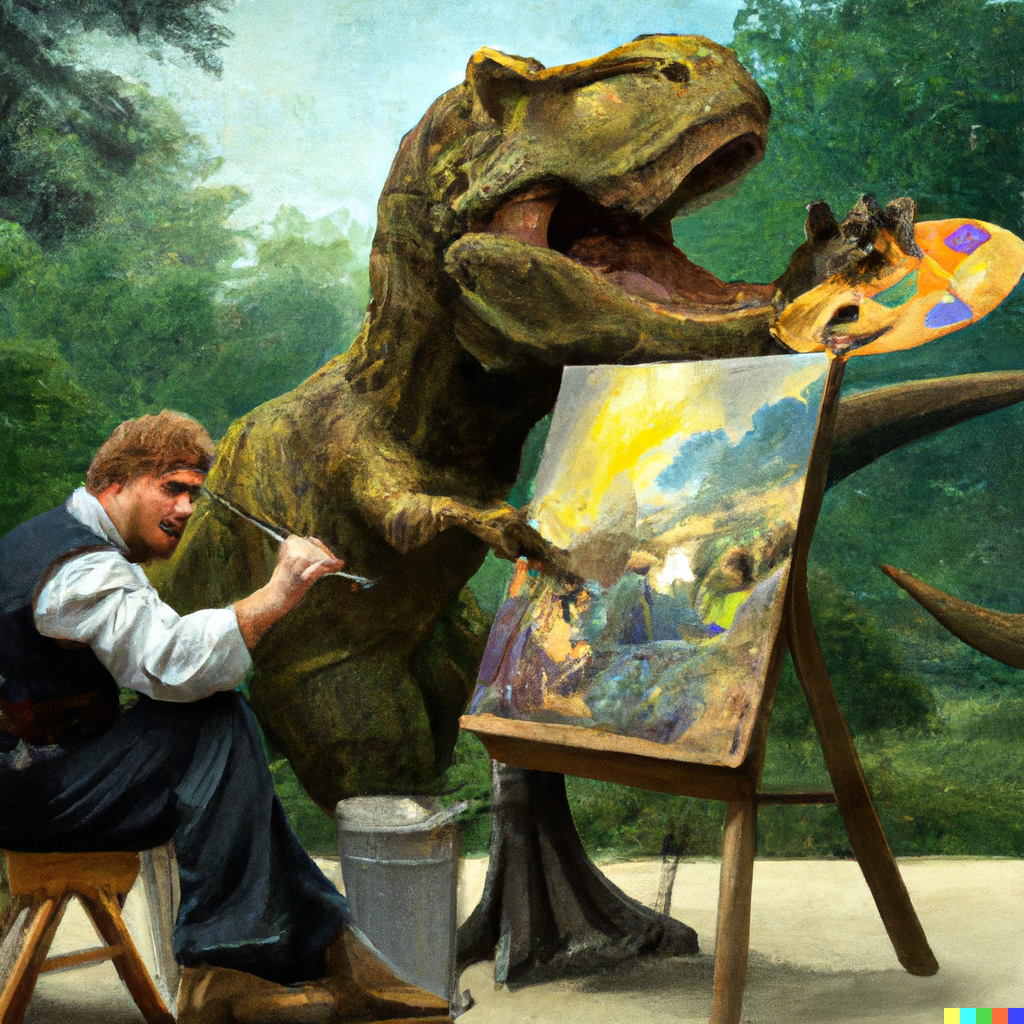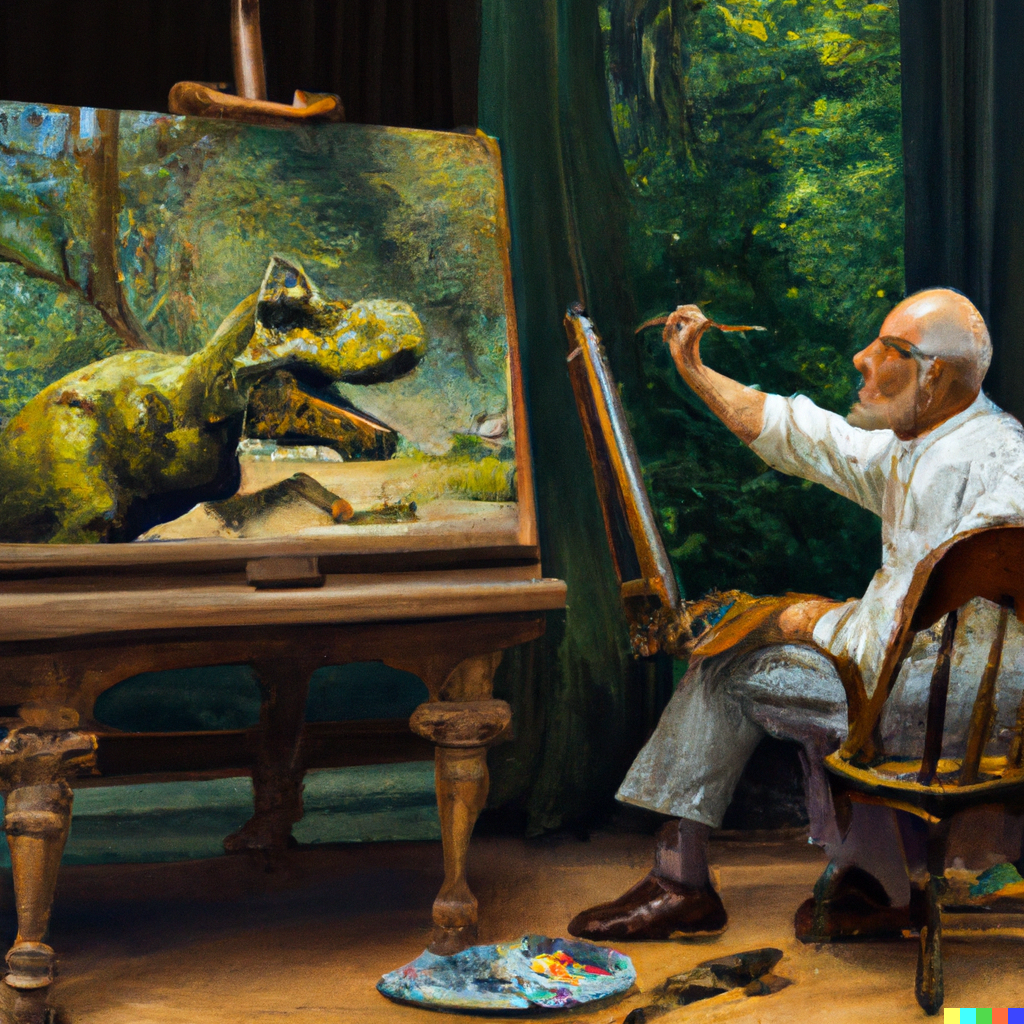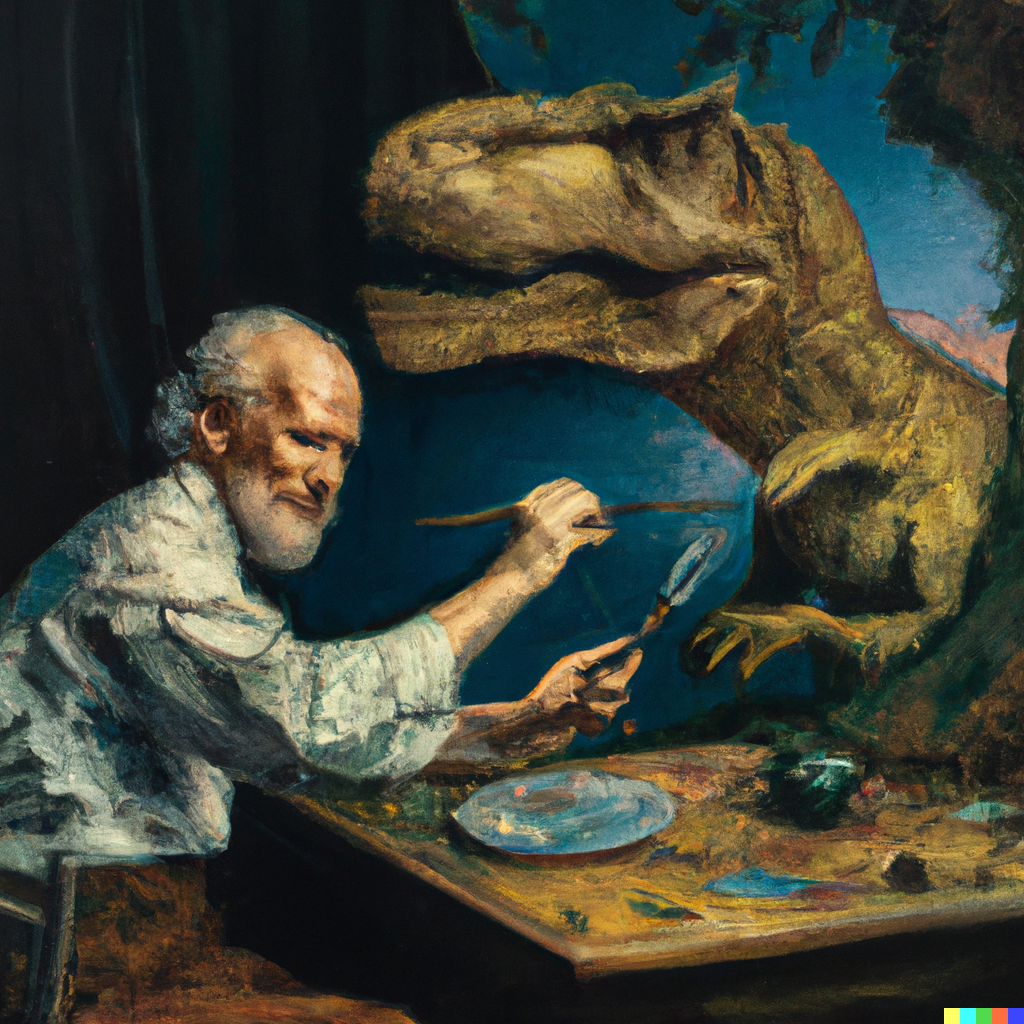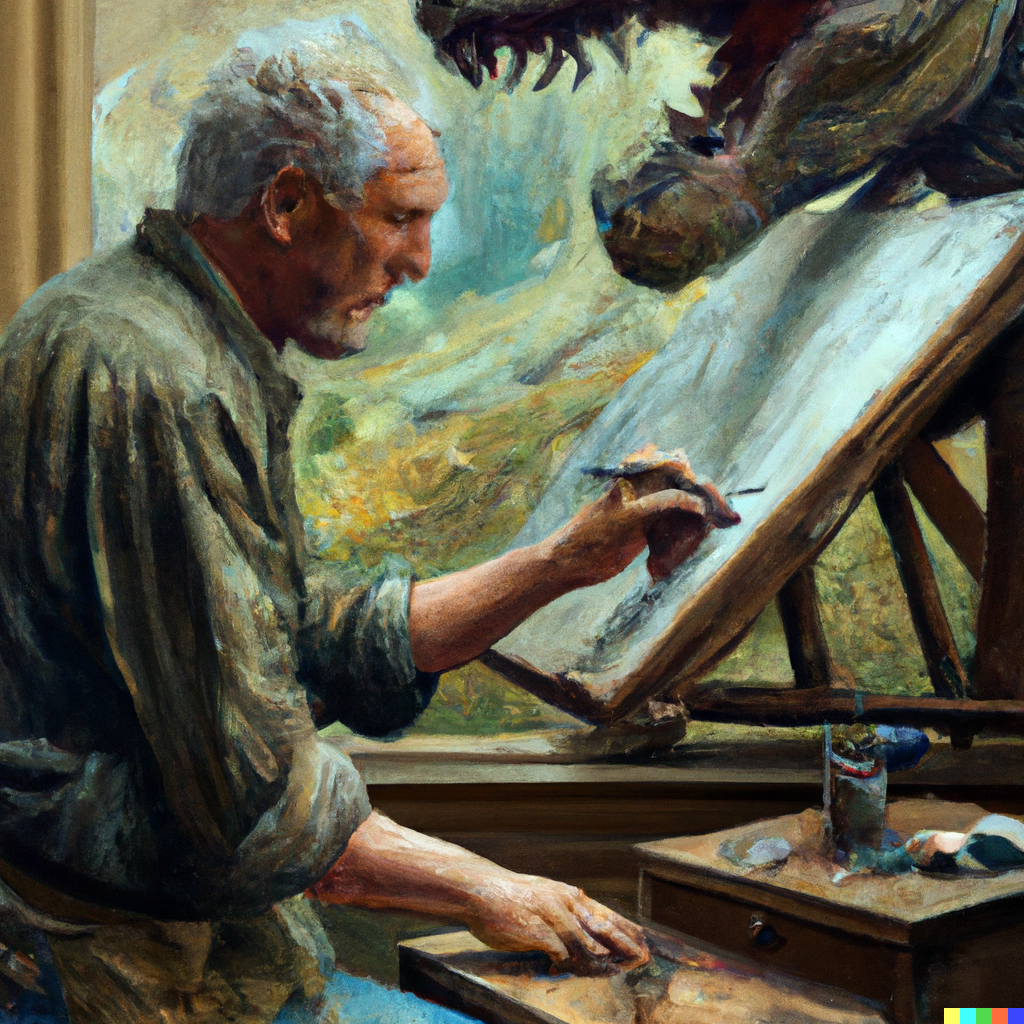“Paint a painting of Vincent van Gogh painting a live T-Rex, Digital Art”
“Paint a painting of Vincent van Gogh painting a live T-Rex, Digital Art” by Christopher Sanchez & Co. via DALL-E
What would a T-Rex painted by Vincent van Gogh look like? What if Vincent van Gogh were to be painting a live T-Rex? The ability to construct exceptionally “unique” and “random” scenes that never happened in real life is one of the many unique possibilities presented by DALL-E via OpenAI. It also helps us to understand how the AI “understands” certain requests, situations, or scenarios that are easy for humans but hard for AIs.
For example, if we wanted to understand what was bigger or smaller in a situation via text, let’s say why you couldn’t bring a stuffed animal home from a trip, it would be easy to understand the logic and reasoning of the situation without any problem. If you received the following text:
“The stuffed animal wouldn’t fit in the suitcase because it was too small.”
“The stuffed animal wouldn’t fit in the suitcase because it was too large.”
In both cases, “it” refers to something different. In one case, “it” was the suitcase that was too small. In the other case, “it” referred to the stuffed animal. This conversation is so simple that we often take understanding such exchanges for granted, but you’d be surprised how hard it is for AI systems to parse a text message like this accurately.
When we asked DALL-E to: “Paint a painting of Vincent Van Gogh painting a live T-Rex,” we were surprised by how well it understood the context of the request. There are still some funny ones that clearly don’t make sense, but overall, the system is starting to narrow in on more conceptually abstract ideas. If you notice, the T-Rex is painting with Vincent, along with a dinosaur-sized paint pallet.
What do you think? What would be other good scenarios to test how well DALL-E understands abstract statements?
You might be wondering what Vincent van Gogh’s final painting looked like. Check it out.

























